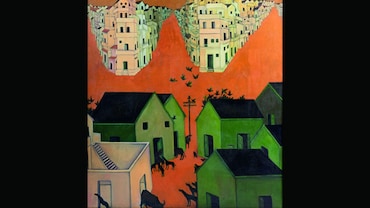- HOME
- /
- Culturescape
- /
- Studio
- /
The Hyperrealistic And Disorienting Portraits Of Riyas Komu
In the triptych 'Dhamma Swaraj', Riyas Komu juxtaposes the portrait of M. K. Gandhi with that of B. R. Ambedkar to create a holographic effect.
 Dhamma Swaraj, by Riyas Komu. Triptych, oil on canvas, 72 x 54 inches (each panel), 2017. Image courtesy: Vadehra Art Gallery and Riyas Komu
Dhamma Swaraj, by Riyas Komu. Triptych, oil on canvas, 72 x 54 inches (each panel), 2017. Image courtesy: Vadehra Art Gallery and Riyas Komu
Riyas Komu's portraits are hyperrealistic close-ups meant more to disorient than acquaint the viewer with the subject. In the triptych 'Dhamma Swaraj', Komu juxtaposes the portrait of M. K. Gandhi with that of B. R. Ambedkar to create a holographic effect. The title of the work refers to the two concepts that the founding fathers held dearly. For Ambedkar, dhamma or dharma was about justice, and there could be no justice without equality. For Gandhi, Swaraj or self-rule was all-important. He placed the onus of social development on the individual and not the State. By placing the images of the two leaders in dialogue, the painting establishes a relationship between their disparate ideologies.
Komu, who co-founded the Kochi-Muziris Biennale with fellow artist Bose Krishnamachari, works extensively to promote art education in India. His work has always been political but his most recent solo exhibition Holy Shiver, of which 'Dhamma Swaraj' was a part, was a searing critique of the current socio-political milieu in India. He often recasts well-known images of violence---such as that of the 1984 anti-Sikh riots---in sculpture, on canvas or as woodcuts, to confront us with our moments of inhumanity, which we too eagerly suppress and forget. In doing so, he also aims to present us with an alternate narrative to the story of independent India.






